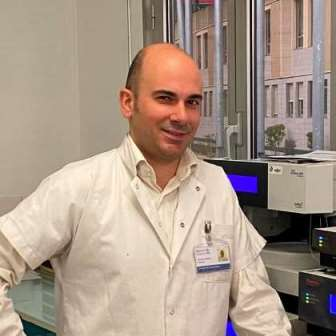Hit to Lead Design of New Anti-Infective Drugs
A special issue of Pharmaceuticals (ISSN 1424-8247). This special issue belongs to the section "Medicinal Chemistry".
Deadline for manuscript submissions: 15 September 2024 | Viewed by 1566
Special Issue Editors
Interests: medicinal chemistry; anti-infectious; anti-proliferative, anti-viral, heterocycles; nitroimidazoles; monoelectronic transfer; organic electron donors
Special Issues, Collections and Topics in MDPI journals
2. APHM, Pharmacy Department, Service Central de la Qualité et de l' Information Pharmaceutiques, 147 Bd Baille, 13005 Marseille, France
Interests: medicinal chemistry; heterocyclic chemistry; Plasmodium; Leishmania; Trypanosoma; nitroheterocycles
Special Issues, Collections and Topics in MDPI journals
Special Issue Information
Dear Colleagues,
Infectious diseases are still responsible for a very high number of deaths worldwide, and mainly affect low- and moderate-income countries according to the WHO. These diseases are mainly communicable, although there are some non-communicable infectious diseases, such as parasitic diseases in which the life cycle of the parasite does not rely on inter-individual direct transmission. They are caused by pathogenic bacteria, viruses, parasites or fungi.
While significant progress has been made in recent years in treating these, notably in preventing sleeping sickness with the introduction of fexinidazole, many efforts remain to be made. This is especially true in areas like tuberculosis or fungal infections.
The COVID-19 crisis has brutally revived the awareness of the loss of control that humanity could suffer in failing to contain the spread of infectious diseases. It also highlighted the problem of virus mutation. More broadly, whatever the pathogens involved, the pathogenic resistance poses a real threat to patient care, and it is increasingly urgent to identify and develop anti-infective agents with new mechanisms of action.
Hit-to-lead (H2L), also known as lead generation, is a powerful strategy used in early drug discovery. In this method, small molecule hits from high-throughput screening (HTS) are evaluated and optimized to identify promising lead compounds.
The aim of this Special Issue is to summarize the state of the art and the latest findings in the field of the hit-to-lead design of new anti-infective drugs, as well as to elucidate future directions.
Prof. Dr. Patrice Vanelle
Dr. Nicolas Primas
Guest Editors
Manuscript Submission Information
Manuscripts should be submitted online at www.mdpi.com by registering and logging in to this website. Once you are registered, click here to go to the submission form. Manuscripts can be submitted until the deadline. All submissions that pass pre-check are peer-reviewed. Accepted papers will be published continuously in the journal (as soon as accepted) and will be listed together on the special issue website. Research articles, review articles as well as short communications are invited. For planned papers, a title and short abstract (about 100 words) can be sent to the Editorial Office for announcement on this website.
Submitted manuscripts should not have been published previously, nor be under consideration for publication elsewhere (except conference proceedings papers). All manuscripts are thoroughly refereed through a single-blind peer-review process. A guide for authors and other relevant information for submission of manuscripts is available on the Instructions for Authors page. Pharmaceuticals is an international peer-reviewed open access monthly journal published by MDPI.
Please visit the Instructions for Authors page before submitting a manuscript. The Article Processing Charge (APC) for publication in this open access journal is 2900 CHF (Swiss Francs). Submitted papers should be well formatted and use good English. Authors may use MDPI's English editing service prior to publication or during author revisions.
Keywords
- hit-to-lead
- small molecules
- drug discovery
- infectious disease
- bacterial infections
- fungal infections
- parasitic infections
- viral infections
- communicable disease
- drug candidates







